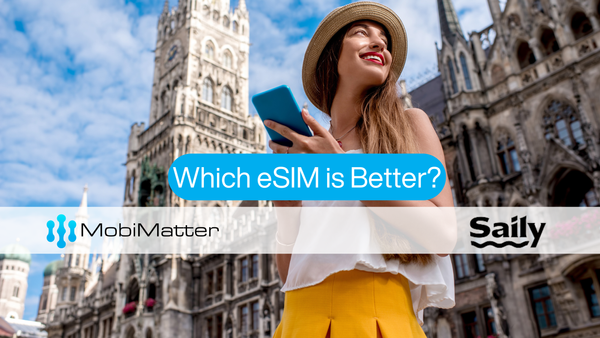Part 2: Downloading the eSIM: QR codes and alternative methods
There are three main methods used to download the eSIM: Via QR / Activation code, through a mobile app or with push based remote provisioning.

Installing an eSIM profile is a hassle free procedure, though downloading the profile into the chip requires an active internet connection. After installing it, eSIMs can connect to the mobile network and work autonomously.
There are three main methods used to download the eSIM:
- Via QR / Activation code: This is perhaps the most common method, where the eSIM download code is delivered to the customer via email, or printout. The customer can use this information to download the eSIM profile to any eSIM capable device, by following device and OS specific instructions.
- Via a mobile app: This method is growing in popularity among app-based eSIM sellers. Technically, this is very similar to the QR / activation code method described above, but instead of giving the activation information to the customer, the app fills-in the required information in the background, and initiates the eSIM download to the smartphone.
- 'Push' based remote eSIM provisioning: This method is mostly used used for eSIM provisioning to M2M and IOT devices, although some operators are using it to provision eSIM on consumer devices, too. In this method, the operator is in full control - the unique device ID (EID) needs to be delivered to the operator, who then pushes the eSIM profile to the device.
Below we will elaborate on a bit more details and discuss the pros and cons of each method.
eSIM download via QR / Activation Code
This is the method used by Mobimatter when provisioning the eSIMs. Buyers get the eSIM download information by email and on-screen immediately upon purchase. eSIM QR code is simply an enumeration of the relevant eSIM server and activation code, but is the most used method to activate the eSIM for the speed and convenience it offers.

Buyers who get the eSIM QR/ Activation information upon purchase have a choice to download the eSIM profile right away, or do it later. They can use the eSIM profile themselves, or give it to others.
Downloading and installing an eSIM via QR / activation code requires users to familiarize themselves with the eSIM settings of their devices and follow the manufacturer specific eSIM activation guidelines.
Here is a link to a short video demonstrating a typical eSIM QR code activation process.
eSIM automatic activation via a Mobile App
This is a method preferred by operators who sell their eSIM connections via mobile app. Customer downloads the app and makes the purchase, and eSIM gets automatically downloaded and installed on the device.
The app achieves this simply by accessing the device settings, filling the necessary download and activation information in the background, and triggering the download process. At first glance, this appears as the most consumer-friendly way of activating an eSIM.
However, customers lose the opportunity to familiarize themselves with essential information on their device eSIM settings, which can cause frustration afterwards when they decide to switch back to another SIM/eSIM or do any troubleshooting if required.
Moreover, not giving the actual eSIM download and activation information to th customer means that all the users who want to use the eSIM need to download the operator app, register, and make the purchase independently.
Our belief is that using the auto-download and activation of the eSIM profile should be given as an option to customers, in addition to delivering the regular QR and activation codes. This way the customer can still be in full control of the product he has bought, and also benefit from convenience of single-click eSIM installation, should he or she choose to do so.
Push-based Remote eSIM Provisioning
This is the best way to provision eSIMs on M2M and IOT devices, where the large number of devices are being managed centrally by an operator or a business entity. Operators need to have the unique devise identification information (EID) and provision the eSIM profile on it at their end.
Some operators follow this approach for eSIM provisioning to consumers, too. There is an added security which comes from not exposing the eSIM download code, and therefore eliminating the risk of it being stolen or used by someone else before the intended recipient has a chance to use it.
However, the added security benefits quickly disappear if one has to wait for the operator staff to provision the eSIM profile at their pace.
No matter which method is used by a given operator or provider, we recommend anyone who is using eSIM to familiarize themselves with their device and eSIM settings, and be comfortable controlling and managing their connections.
Investing a little bit of time to learn how eSIMs work will improve your confidence with handling multiple connections in your phone, and reward you with smooth usage experience in the long-run.
For those who would like to try buying an eSIM, Mobimatter has an incredible catalogue of eSIMs for Europe, US, Asia, Middle East and hundreds of individual countries in the world.




